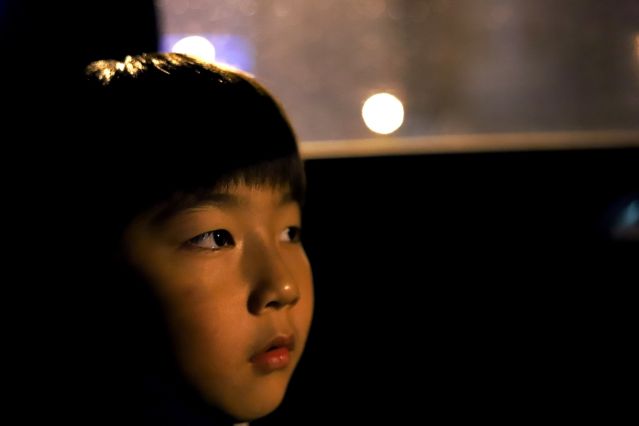Grief
How to Comfort a Child Who Has Lost a Loved One
What to do when your child is grieving.
Posted December 15, 2022 Reviewed by Tyler Woods
Key points
- There is no "right" way to grieve.
- There are developmental stages in how children understand death.
- Seeing adults acknowledge and cope with sadness and loss is important modeling for children.

Losing a loved one is hard for adults. For kids, there's an added layer of confusion. Here are some ideas for helping children cope with grief.
Let your child grieve in their own way
There are various models of stages of grief, but the truth is that grief is a very personal process. People skip stages and do the stages backwards and make up their own stages. Grief can also be unpredictable. A situation that you think is going to be horribly difficult might turn out to be not so bad, but then you might run across a paper clip that your loved one used and the grief hits like a gut punch.
There is no one right way to grieve. If your child doesn’t cry, don’t assume they are “holding things in” in an unhealthy way or that your child didn’t really love the deceased. Asking anxious but morbid questions about dead bodies, repeatedly asking the same question, becoming worried about their own death, or just seeming confused…all of these reactions are common. They’re just trying to figure things out.
Children are also concrete thinkers, so they may ask about practical issues that impact them, such as, “Who will pick me up from school, now?” Answer as best you can or tell them when you’ll figure it out. They’re not being selfish; they’re trying to understand the implications of the loss and deal with uncertainty about how their world works now.
Child development and grief
There are developmental stages in how children understand death that can impact how they grieve. These are general trends, so of course, individual children may or may not fit them.
- Three- and four-year-olds think death is temporary and not personally relevant. They might ask repeatedly, “When is Grandpa coming back? Why can’t we call him on the telephone?”
- Young grade school children (about ages five to nine) understand, in a general way, that death is permanent and that all living things die, but they don’t believe that they will die. They may find symbols like skeletons or the Grim Reaper frightening. They may also worry that they are somehow responsible for the death because they misbehaved.
- Around age nine, children grasp that they, too, will die someday. Some children become extra cautious at this stage; others become daredevils, defying death. They may also become preoccupied with their own physical symptoms.
- Older tweens and teens, with their new ability to do abstract reasoning, often enjoy philosophical discussions and developing their own beliefs about the meaning of life and death. They may wonder, “Why did Grandpa have to die?” or their interest in this type of big question may shut down temporarily when the person who died is a loved one
Your goal as a parent is just to meet your children with acceptance and understanding, wherever they are in their grief journey.
If your child is anxious about your death, try to offer reassurance without making false promises. You might say, “Most people live a long time. I plan to be around to watch you grow up and have children of your own. If, somehow, I die before that, Aunt Jane would take care of you. You wouldn’t be alone.”
With older children and teens, you can address the uncertainty of life. “We never know when we’ll die, so it’s important to appreciate life, to spread kindness in the world, and to love as much as possible each day.”
Share your own sadness and coping efforts
Seeing adults acknowledge and cope with sadness and loss is important modeling for children. If your child sees you crying, just explain, “I’m sad because I’m missing Grandpa.” Sometimes kids feel uncomfortable because they don’t know what to do when someone is upset. Just tell your child, “I could use a hug,” and say thanks afterward.
Observing adult grief (in manageable doses), helps children to learn that death is a sad and important event, that it’s something we share as a community, and also that we carry on living despite our loss.
If your child seems sad, offer a hug and reassure your child that it’s normal to feel sad when a loved one dies. You may also want to talk explicitly about coping options. “When I’m missing Grandpa, sometimes it helps to remember happy times we shared. Do you remember when we went to the beach?” Or, “When I’m missing Grandpa, sometimes it helps to talk to people who loved him, too. Do you want to call Grandma?”
Often, parents are reluctant to include children in bereavement rituals because they want to protect children from the pain of loss. But death is an inevitable part of life, and there is a lot to be gained by allowing children to be present at these rituals.
Bereavement rituals are a community’s response to grief. They allow us to honor the deceased, receive the comfort of loved ones, and acknowledge our loss. The closer your child was to the deceased, the more important it is that he or she be allowed to participate in some way in these formal goodbyes.
Preserve family memories
Kids forget. We all do. Consider collecting memories about your loved one that your child can look at later. There are various ways to do this.
One way that I often use with children in my practice is to jot memories down on index cards. I usually include a heading, to make it easier to find a particular memory, but I let the child dictate to me, and I write it down. Sometimes, kids want me to hold onto the memories for a while. Sometimes they want to take the memories with them.
The index cards leave kids free to say anything, in any order. To capture the full range of their experience with this person, they can include enjoyable moments but also things that were funny or annoying about the loved one. Simple memories about what they often did or said, what they liked or didn’t like, what they wore, listened to, or watched can be important to record.
Some families I’ve worked with have created a family notebook or Google Doc where anyone can jot down memories. Many families find that looking at old photos can trigger memories. Preserving memories of a loved one is a way to stay connected with that person, as well as with other family members.




